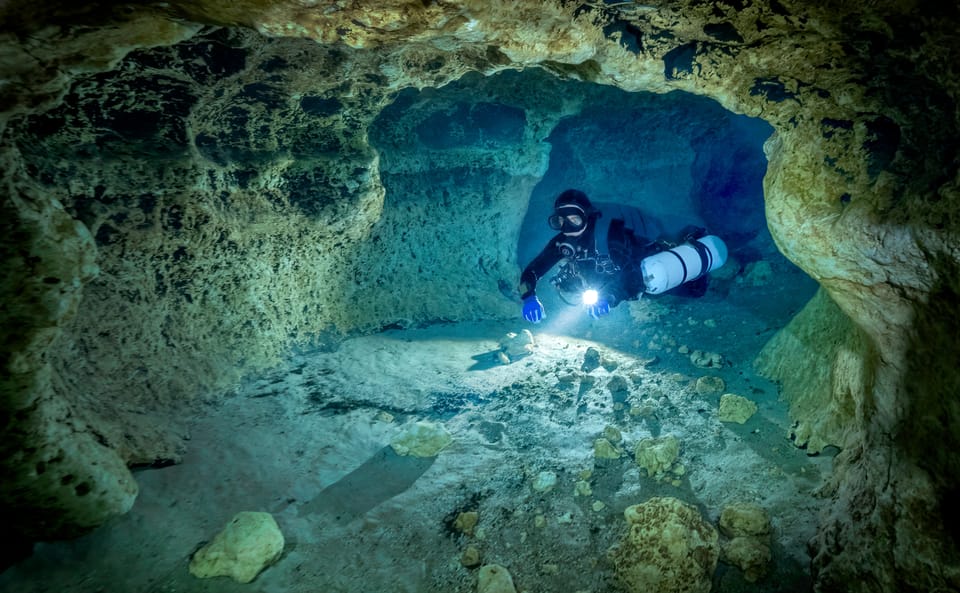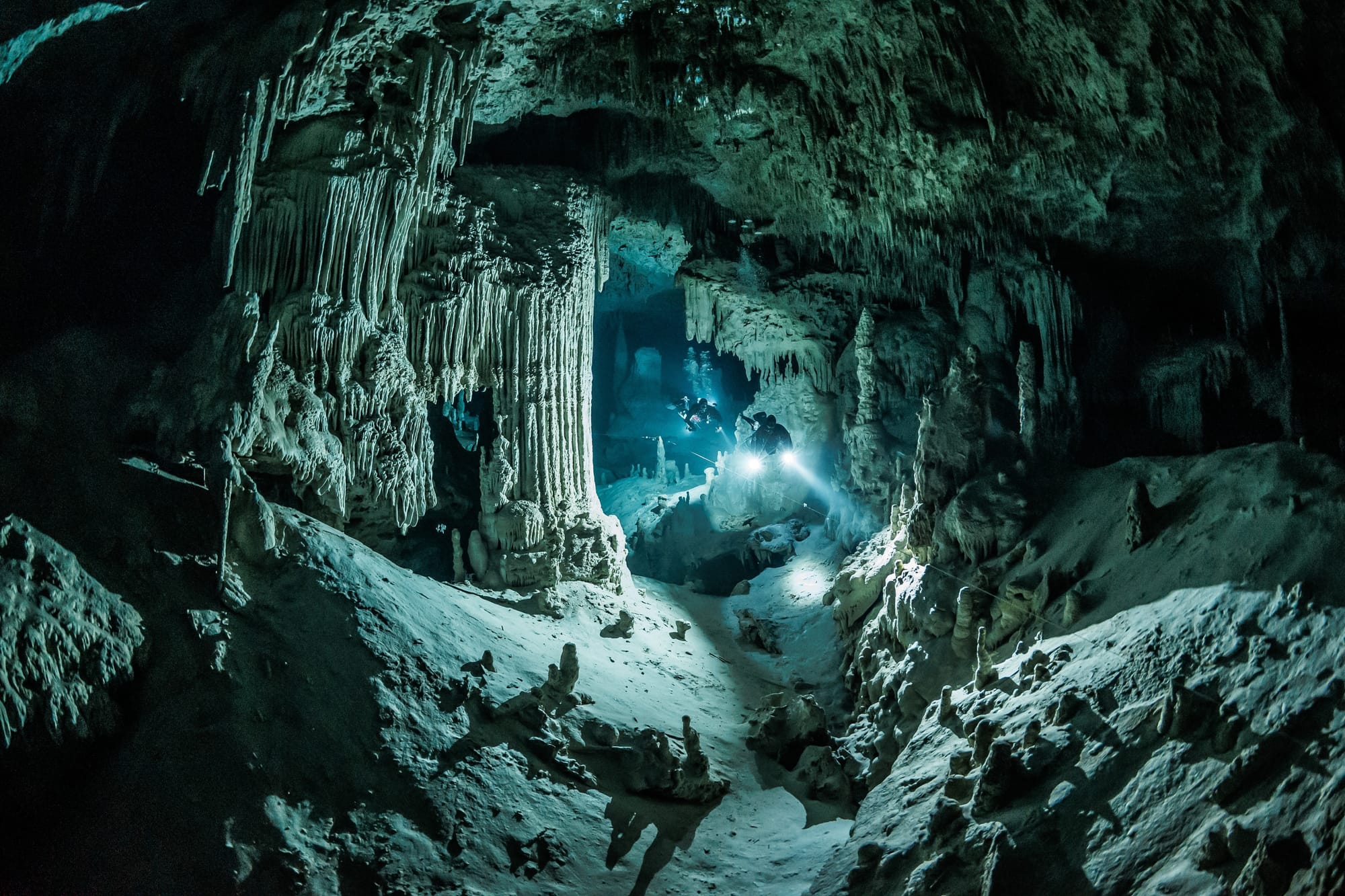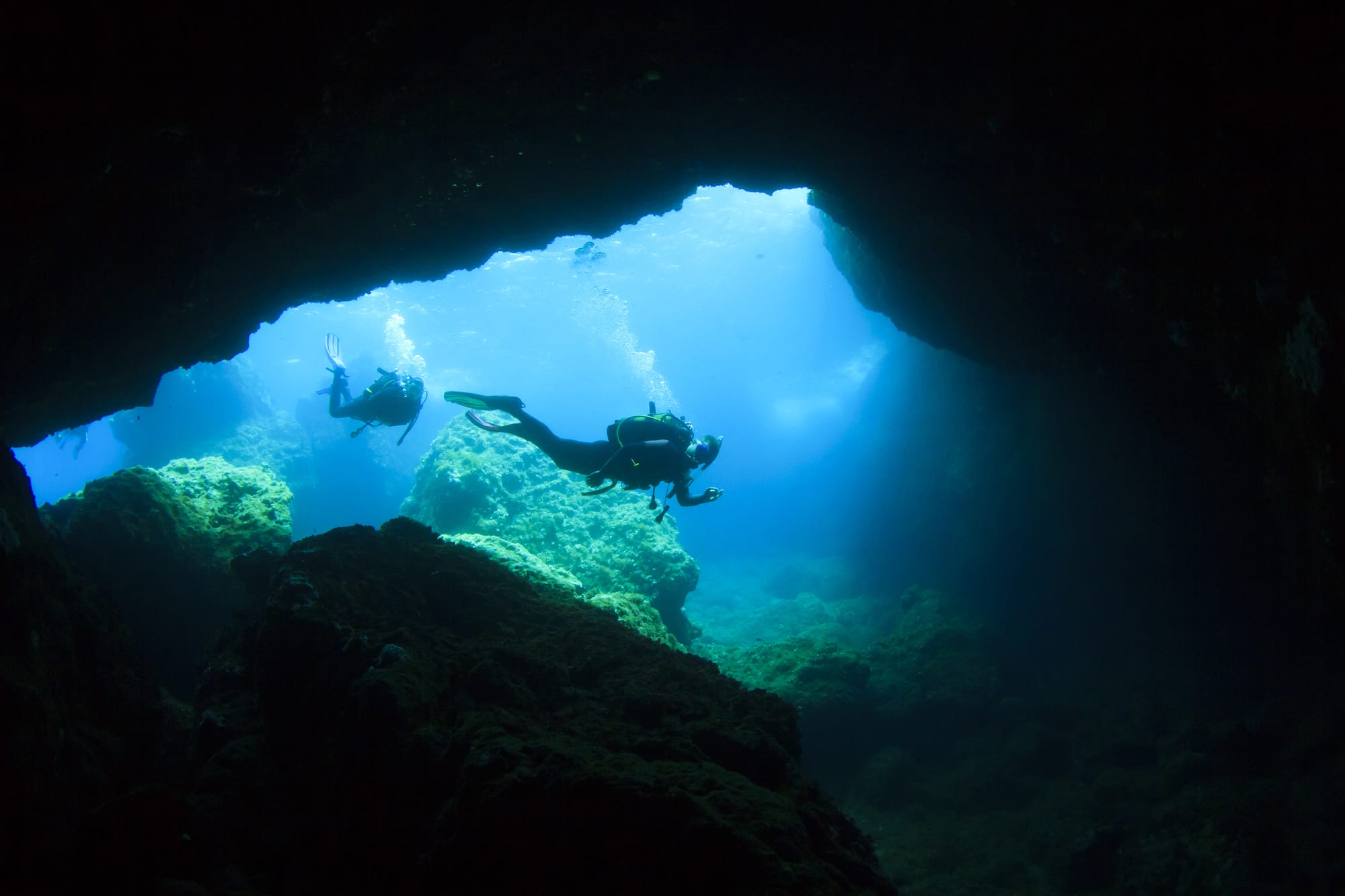Cave diving: The most extreme sport?

People have always been fascinated by reaching the most extreme places, and flooded caves are arguably rightful contenders for the title of "most extreme place to reach".
Semantically, Cave diving combines two sports (caving, and diving), that can appear alluring although somewhat scary at first glance. Even if it is a dividing topic as to why people either venture into caves or underwater, hobbyists have many motivations, be it the thrill of the adventure, surpassing themselves, or even knowing they might be among the first few people in the world to see a certain spot.
When we talk about Cave Diving, people immediately visualize tight, narrow passages; divers squeezing between two rocks, and having to take off their equipment to reach the other side. The reality is quite far from it: caves are usually quite wide and have vast galleries. This is often what entices divers to explore them: a vast, almost alien-like scenery ready to be discovered.

This being said, narrow squeezes still exist, and the decision to go through them is obviously left to the discretion of each cave diver.
Cavern vs Cave
First of all, I find it important to make a distinction between Caverns and Caves. Often used interchangeably, each term is actually distinct from the other. The definition may slightly vary depending on each diving agency, or dive site authority, but usually, differ by the following points:
- A Cavern has natural light penetrating it/Visible entrance
- A Cavern is limited in depth (i.e. Beyond 30m/98ft or 40m/131ft, any cavern would be considered a cave)
- A Cavern is limited in linear distance from the entrance/surface (same point as before)
- Both Caves and Caverns, however, are still "overhead environments"
In some diving spots (for example Ginnie Springs, in Florida), you will not be allowed to dive with a light if you are not cave-certified, this is to dissuade non-cave divers from crossing the cavern/cave threshold.

The passage from a cavern to a cave is often delimited by the grim reaper sign, as you can see below. It is made to deter non-cave divers from going further and possibly risking their lives.

Risks
The main difference between cave diving and open-water diving is the overhead environment nature of caves: simply put, you can't just ascend and reach the surface in a cave, you have to exit the cave first, and then you can exit the water. This sounds pretty logical, but it comes with additional risks:
- First of all there is the issue of losing your orientation. Because you're underwater, you have a third dimension to navigate through, and navigating correctly is much more important when you have to find the exact spot you entered from with many potential tunnels and openings. In an open-water dive, if there is an issue, you can always surface, however, in a cave you'd have to find the exit before surfacing.
- Losing visibility is another potential problem: by definition, caves start when the outside light no longer illuminates your surroundings, so cave divers use diving lights to see properly. Another thing that can impact the visibility is a silt out, which can happen if an improper finning technique is used (silting out an area means kicking up all the silt, turning that area into a no-visibility zone).
- Gas management is a big thing to take into account, as cave divers need to make sure to have enough gas to come back to the entry!
Rules and precautions
There are many rules and additional precautions that a cave diver should have compared to a regular open-water diver, to make their excursions as safe as possible. The basic guidelines are usually known as the five golden rules of cave diving, which are:
- Follow the rule of thirds, which states that you should plan for using 1/3rd of your air on the way in, 1/3rd on the way out, and the last third should be left as a safety margin.
- No deep caves on air. If a cave is deeper than 30m, use a helium blend reducing narcosis, to maintain full mental capacity.
- Use a minimum of 3 diving lights. You can use 1 main light and 2 backups. If any of those stops working, end the dive.
- Use a guideline; meaning that there is a line attached to a point completely outside of the cave, which you will use to make sure you take the right path to exit.
- Have sufficient training. Someone diving in a cave should have cave-diving training!
Final word
Although Cave diving has a bad reputation, it is quite a safe hobby if done properly and if all the guidelines are followed. So is it the most extreme sport that exists? It does take a lot of skill and experience to do it correctly, and risks are mitigated through rigorous training, which leaves the denomination of most extreme sport to be interpreted subjectively.
Nevertheless, if you ask any cave diver, they will recommend you to try this incredible experience, provided you have the proper training!
